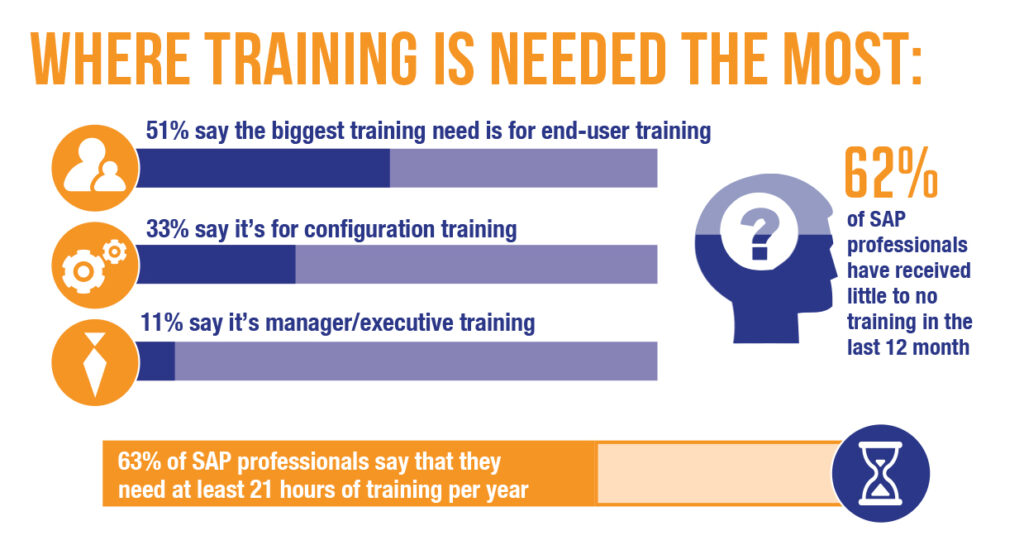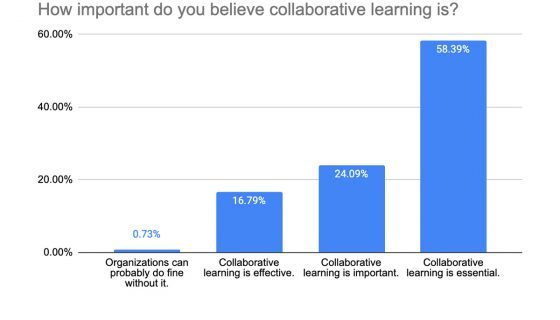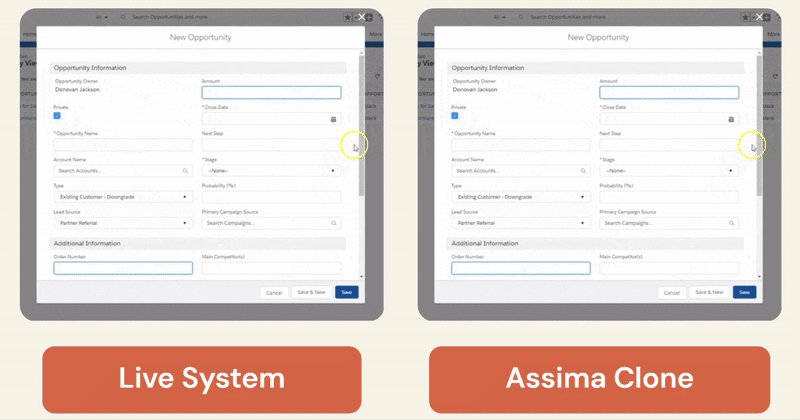Introduction

SAP is undoubtedly one of the most widely used ERP solutions in the world. It would not be an understatement to say that it has become the standard for ERP software. However, it is also quite difficult to learn to use and configure to one’s needs. It is a high-code platform with many features and functionalities, that takes hours of practice to master. A survey of over 3000 students by Michael Management reveals that even though 63% of SAP professionals feel the need for at least 21 hours of training per year, 62% have received little to no training in the previous year.
While this is an alarming statistic, it also brings our attention to the fact that most organizations lack what is required to provide training for a platform as complicated as SAP. One needs targeted and optimized training programs to overcome SAP training challenges without compromising on quality or learner satisfaction. A learning platform that can be geared to ensure digital adoption with targeted SAP training like Assima is your best bet in this scenario.
Get a better look at what Assima can do for your SAP training needs.
Understanding the Key SAP Training Challenges
SAP training challenges are commonplace and often multiplied by the lack of preparation by organizations when implementing SAP.
Large-scale SAP training programs are not simple. You cannot use traditional L&D strategies due to the dramatic change in business process driven by a global SAP deployment. Here are a few common SAP S/4HANA training challenges that you must overcome to ready your employees for the live system:
Insufficient Budget and Time
SAP training must be both extensive and intensive to be impactful. Yet, most companies underestimate in the initial plan the amount and time required for training and change management, especially for SAP onboarding for large teams. This leads to further budget requests for additional resources and an extended timeline to deliver training needs for the business.
Lack of Management Support
One of the biggest SAP training challenges is communicating the importance of user adoption to management in regard to the necessary infrastructure for SAP training. Most upper-level leaders fail to support L&D in their endeavors early enough in the project for sufficient SAP training, leading to challenges in suitable user onboarding for the new system.
SAP System Complexity
The SAP platform itself is a highly complicated and feature-heavy system. There are tons of modules and functionalities, utilized for different business processes and workflows. Not only is it difficult to properly train employees in but most companies also get it wrong when choosing who to train in which aspects and when.

Employee Resistance
Employee resistance is expected when implementing any new software, more so when it involves an application suite as complex as SAP. Without a proper change management and orientation, there is bound to be pushback, frustration, and demotivation of employees, which can be a major roadblock if not dealt with in a sensitive manner.
Multiple System Risks
SAP deals with a huge volume of protected business data. Live training, which in most cases is recommended to provide hands-on training, can be risky in the case of SAP. Not only can sensitive data be wrongly exposed, but any errors could impact customer data in the live system, that would require back-office teams to re-work costing time and money.
Ill-Prepared Training Program
Designing a training program for SAP learning requires ample planning, preparation, and management. You not only need to utilize a robust digital adoption platform but also prepare lessons specific to each role and responsibility for which SAP would be used.
These are, of course, challenges specific to SAP training. Before overcoming SAP learning barriers, you must also be aware of your general training issues and take steps to resolve them. You can gain more insights about this here.
Best Practices for Effective SAP Training
There is no set formula when it comes to SAP user adoption strategies. The complexity of the platform demands tailored training programs for different roles within the organization. However, there are a few SAP training best practices that you can apply in general to every circumstance:
Personalized Learning
Every SAP learner at your organization has a different experience level, learning preference, learning speed, and objective. While it may seem like a hassle, the best way to optimize training for everyone is to tailor the process according to individual requirements.
Role-Based Training
Different teams, departments, and even individuals will have different roles in the company and accordingly, different responsibilities. Hence, their activities and requirements from SAP would also be different. You must provide targeted, role-based training to prevent wasteful training.
Simulation Training
Simulation training is the best way to provide a hands-on learning experience by emulating the live system without the risks of introducing errors into the live system. Simulation training is also one of the most guaranteed methods for improving SAP knowledge retention.

Multi-Faceted Lessons
A proven way for information consumed to be ingrained in the learner’s mind is to deliver content in multiple formats and methods. Use a combination of video, audio, text, and interactive elements, as well as online learning and practical application for the best results.
Scalability Measures
The SAP application suite was developed with the aim of unifying all business processes. Hence, chances are that if you deployed SAP for a small part of your workforce, you will soon be looking to expand it to other teams. Training should be made scalable to grow with the organization.
Detailed Analytics
Since SAP is a complicated platform, its training program becomes so too. Only real-time progress tracking, reporting and analytics can give you complete visibility into how each learner is faring. Only then can you identify their strengths and weaknesses and evaluate them accurately.
Constant Updates
No training program can be static. As time progresses, so do the training requirements. Moreover, as the program is implemented, you might find flaws and areas of improvement that need work. Constantly making these changes will refine the training to a higher level.
DAP Utilization
Even though DAP is recommended for learning most software, it is absolutely essential for SAP. Utilizing enterprise SAP training solutions will help you manage the training program with greater control and accuracy. Letting people learn without a training system will only result in chaos.

Collaborative Efforts
Humans, as a rule, are social creatures. Hence, they learn better through mutual interactions. The State of Collaborative Learning 2022 survey shows that over 80% of L&D practitioners believe that collaborative learning is necessary for employee training to be effective.
How Assima Train Helps Overcome SAP Training Challenges
Assima fares as one of the top enterprise SAP training solutions for big organizations across the world. Its innovative features are perfect for acing SAP learning and overcoming major SAP training challenges. Here are a few ways Assima is the best choice for all your SAP training needs:
Interactive Simulations
Assima uses a 4X patented cloning technology to create hyper-realistic, hyper-interactive simulations that can be used just like the live SAP system. These interactive SAP training methods provide a hands-on learning experience that greatly boosts knowledge retention and recall.

Reduced Maintenance during System Changes
Assima Train simulations are fully editable due to its patented cloning technology. All content can be updated without having to re-record screens every time there is a system change. This reduces maintenance tasks by 50% compared to other screenshot-based products.
Role-Based Deployment
Assima’s platform facilitates role-based training, allowing Assima Train simulations to be delivered based on the current role and task of the employee. Assima In-App Search also provides contextual information on the app based on one’s position and task.
Detailed Tracking
The Assima analytics dashboard provides in-depth tracking, reporting, and analytics for every learner, down to the last click and input. This helps you stay updated regarding the progress of every learner as well as the effectiveness of the training program as a whole.
Scalability Measures
The SAP application suite was developed with the aim of unifying all business processes. Hence, chances are that if you deployed SAP for a small part of your workforce, you will soon be looking to expand it to other teams. Training should be made scalable to grow with the organization.
In-App Guidance
Assima In-App Search is a supplementary tool for learning new technology with Assima Train. While Assima Train helps with pre-go live training, In-App Search supports employees post-go live with relevant information within the SAP platform.

Scalable Features
Assima Train provides localization capabilities to support global deployments. Its patented technology allows data and content to be changed without the need to re-record like screenshot-based tools. All training can be delivered in local requirements along with your global template.
Data Security
In-built data security and access management features as well as data anonymization make Assima the perfect solution for training in ERP platforms, especially SAP. We also possess the necessary international data privacy and security certifications for our operations.
Conclusion
SAP training challenges will always be there, no matter how big or small your organization is or how many training programs you have undertaken before. The best way to overcome them is to thoroughly plan and prepare for the process and be agile enough to adapt quickly to any situation. Of course, one of the best ways to tackle SAP training is to leverage a systems training platform that is equipped with the right features and capabilities. A solution like Assima is guaranteed to make your SAP training program a success. Why not give it a try?
Discuss your needs with our experts to decide on the perfect solution for your company.
Frequently Asked Questions
Let’s Answer Some of Your Questions.
A large enterprise has a diverse workforce, varied roles and responsibilities, complex business processes, and altering enterprise needs. Hence, SAP training for such organizations must be designed with multiple customizations, which can be difficult when dealing with an already complicated platform.
SAP training efficiency can be improved by ensuring tailored training, constant tracking and improvement, using a variety of training methods, and providing a productive learning environment to your employees.
Assima Train is fitted with features and functionalities that are perfect for deploying SAP training, like customizability, scalability, interactive simulations, in-depth analytics, data security, in-app guidance, and more.
There are a range of metrics that can be used to measure SAP training effectiveness, like training ROI, increase in employee productivity, training completion and pass rates, training drop and failure rates, learner satisfaction score, etc. Choose the metrics that best define the success and failure of training in your specific circumstance.
SAP user adoptions can be ensured by adopting a well-planned training program, deploying a suitable DAP, taking measures to overcome resistance, and applying the best practices tried and tested in the field of SAP training.
